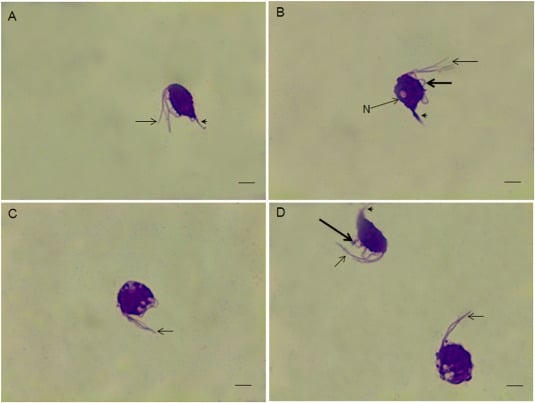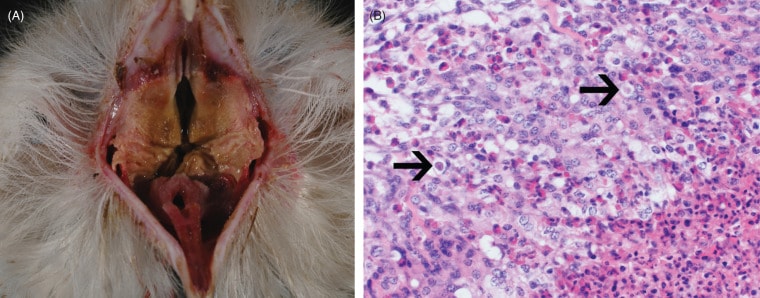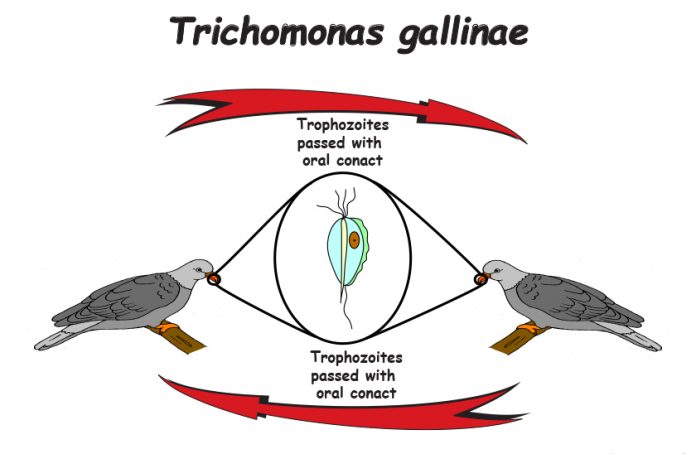Trichomonas gallinae is a single celled protozoan parasite of birds. It is a flagellate, meaning that it has a number of long tentacle-like flagella that aid in locomotion
T.gallinae lives in the oral cavity, crop, and upper digestive tract of birds, usually pigeons and doves. It is a significant problem in domestic flocks of these birds.

It also occurs in birds of prey, which acquire the parasite when they prey on infected birds. Many other wild bird species appear to be immune, but some, such as finches and sparrows are occasionally affected.
Trichomonas gallinae are small, 5 to 20 µm size, oval to pea-shaped flagellates with four free, anteriorly placed flagella, axostyle protruding from the posterior end, and an undulating membrane.

Trichomonads have a direct life cycle and reproduce by binary fission. Described parasite forms include motile trophozoite and nonmotile pseudocyst stages. Trichomonads observed under the light microscope in freshly processed clinical samples are rapidly moving (circling in in a jerky manner with no clear direction, not escaping the microscope field), translucent small flagellates that may appear single or in clusters.
Video of trichomonads moving:
Under higher magnification one can often observe wave like movements of an undulating membrane. Different strains of T. gallinae differ in their virulence from apathogenic to very virulent.
Some strains of T. gallinae appear to be much more virulent than others, but even with the virulent strains, a percentage of birds survive the infection.

Infected birds have accumulations of a cheesy exudate in their mouths and crops, and virulent strains damage internal organs such as the liver and lungs. Even a mild infection will reduce the bird’s energy level significantly.
The medical term for infection with T. gallinae is trichomoniasis: in pigeons and doves, the disease is called canker. In birds of prey, it is known as frown.


















